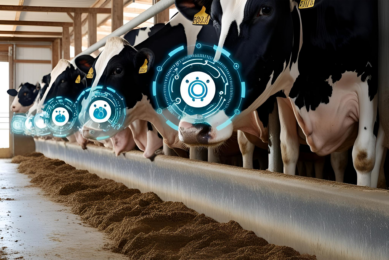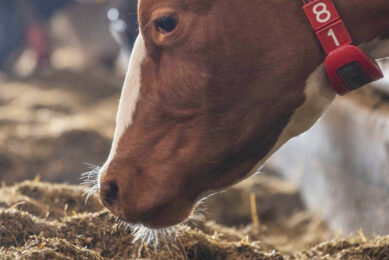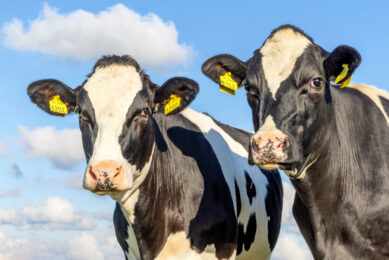Increasing a dairy herd’s nitrogen efficiency
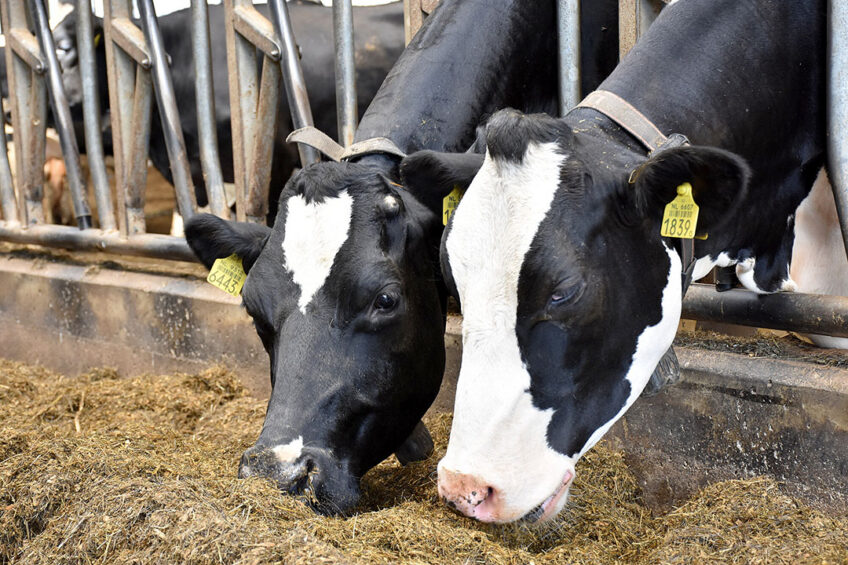
Dairy farmers trying to increase the nitrogen efficiency of their herds have been urged to fully analyse forage on the farm before decreasing protein content of feed.
As dairy cow diets contain nitrogen, mostly in the form of protein, the percentage of nitrogen consumed by the cow, and which subsequently ends up in milk protein, is defined as nitrogen use efficiency.
Research by Agri-Food and Biosciences Institute (AFBI) in Northern Ireland has shown the average nitrogen use efficiency by dairy herds to be low at around 30%. Most of the remaining 70% nitrogen is therefore excreted in manure, and part of this manure nitrogen can be lost to the environment during housing, manure storage and field spreading.
Contributes to climate change
It is during these processes that the problems with emissions arise. For example, nitrogen in the form of ammonia gas can be deposited on sensitive habitats leading to biodiversity loss and soil acidification.
Nitrogen is also lost as nitrous oxide, a potent greenhouse gas which contributes to climate change. When nitrogen is lost from manure to watercourses via leaching, this can cause nutrient enrichment of waters.
It is these nitrogen losses to the environment that governments want to substantially reduce in order to improve climate conditions and meet their GHG reduction targets. Also, as protein is the most expensive component of dairy cow diets, there is a huge interest, from a financial point of view, to increase the efficiency with which dairy cows utilise nitrogen.
Utilise nitrogen
This particular study was undertaken to quantify how efficiently dairy cows utilise nitrogen during the housed winter period on commercial dairy farms across Northern Ireland. It was funded by Department of Agriculture and Rural Development of Northern Ireland (Daera) and by AgriSearch through the Research Challenge Fund and was conducted by AFBI on 26 local dairy farms. Participating herds were predominantly composed of Holstein Friesian cows with an average annual milk yield and concentrate input of 8,800 kg and 2.9 tonnes per cow, respectively.
Each farm was visited 4-5 times during the study period, when silage and concentrates being fed to the cows were sampled and detailed information on feeding practices was collected. Researchers also collected information on each herd’s milk production and milk composition obtained from milk recording organisations. The individual cow dry matter intakes were estimated.
Efficiency results
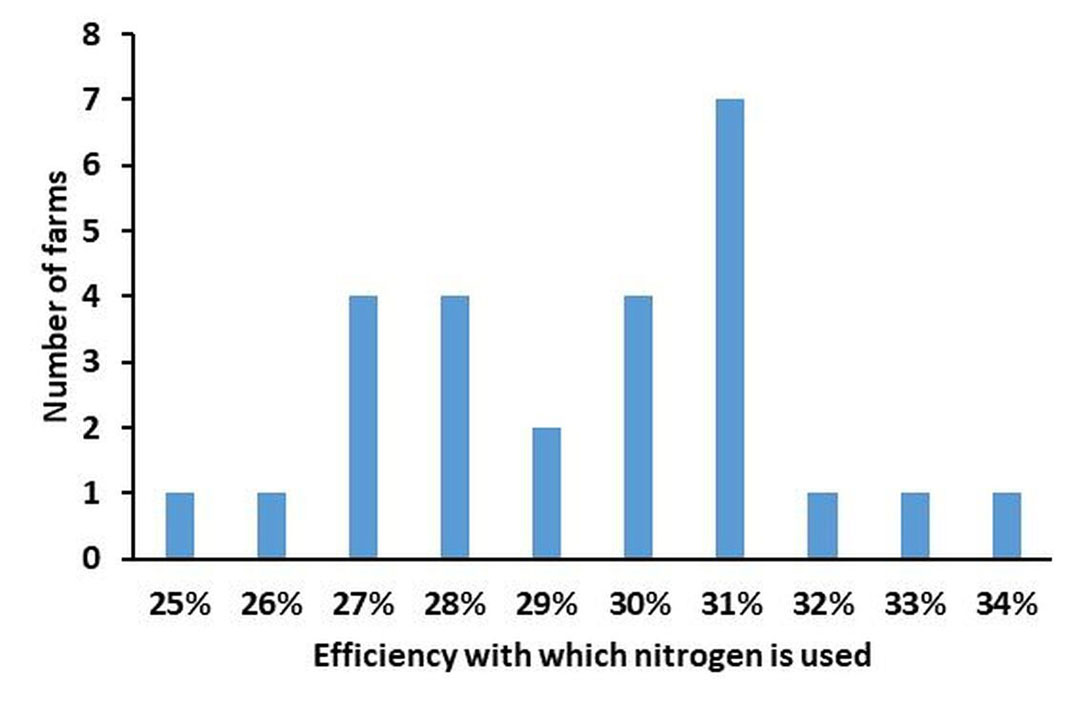
Results from the 26 farms indicated there was a wide range of nitrogen use efficiencies, ranging from 25% to 34% (See Figure 1).
The average nitrogen use efficiency was 30%, which means that approximately 30% of nitrogen consumed by the cows on these farms was converted to milk protein. A nitrogen use efficiency of 30% is similar to the average value previously reported in the UK.
Within this study, AFBI also examined factors that influenced nitrogen use efficiency. As expected, the crude protein content of the diet was one of the main factors influencing the efficiency with which nitrogen was used.
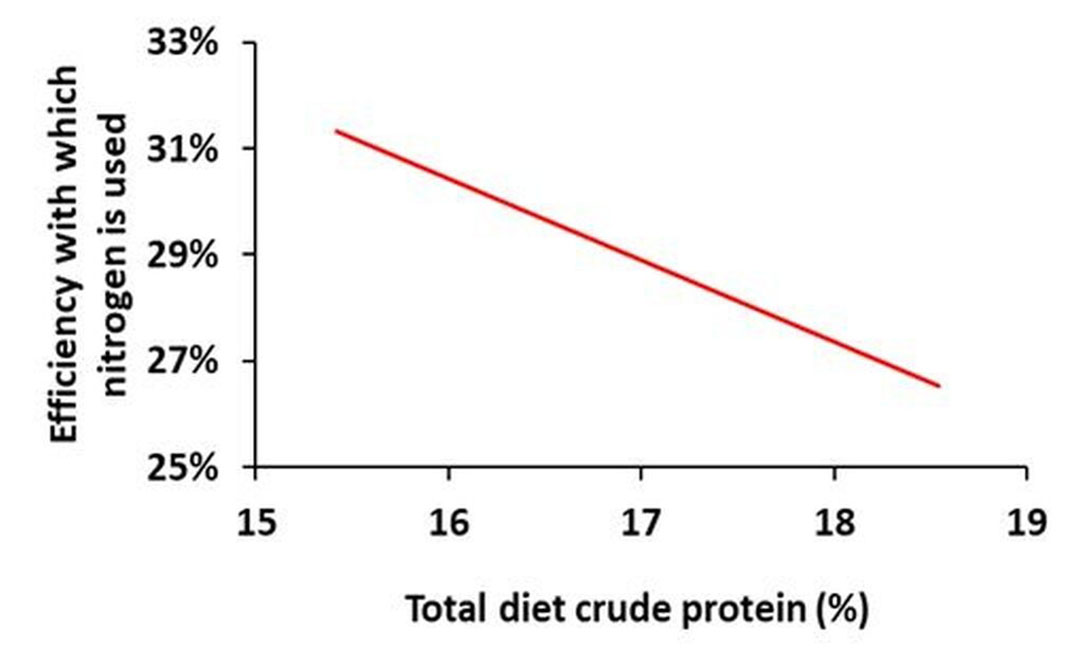
Figure 2 demonstrates that as total diet crude protein content increased, the efficiency with which nitrogen was utilised decreased. For example, at a total diet crude protein of 15.5%, approximately 31% of nitrogen consumed was converted to milk protein, meaning that almost 70% of nitrogen was excreted in manure. Meanwhile, with a total diet crude protein level of 18.5%, only 26% of nitrogen consumed was converted to milk protein, so around 74% of nitrogen was excreted in manure.
This clearly demonstrates that as the crude protein content of the diet is reduced, nitrogen is used more efficiently and less nitrogen will be excreted in manure. However, when diet crude protein levels are too low, cow performance can be reduced if the cow’s metabolisable protein requirements are not met.
In recognition of this, Daera, supported by co-funding from feed companies have commissioned AFBI to conduct a research programme to investigate the role of low protein diets for dairy cows. This research programme is also measuring the actual excretion of nitrogen in manure and is determining the effect of diet on ammonia and nitrous oxide losses from slurry.
What can farmers learn?
The efficiency with which dairy cows convert feed nitrogen to milk nitrogen on local farms during the winter is extremely variable, with an average of around 30%. Reducing total diet crude protein content would appear to be one of the key options by which to improve the efficiency with which dairy cows utilise nitrogen for milk production.
However, as farmers seek to move to lower protein diets it is important that account is taken of the composition of the forages available on the farm, and that diets are formulated to meet the cow’s metabolisable protein and energy requirements.
Join 13,000+ subscribers
Subscribe to our newsletter to stay updated about all the need-to-know content in the dairy sector, two times a week.




